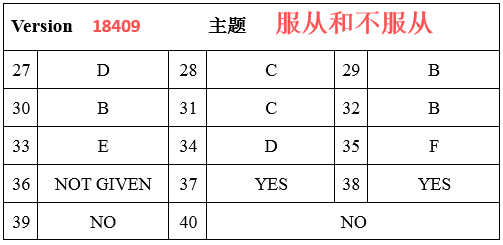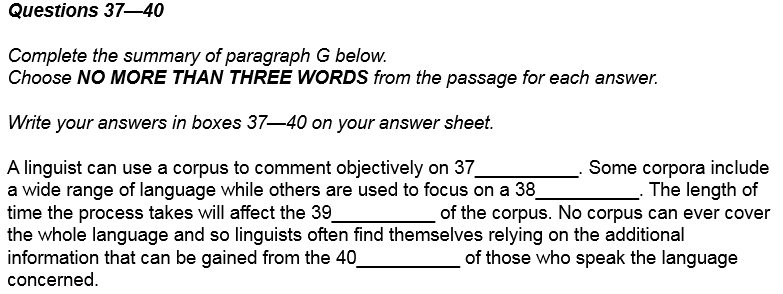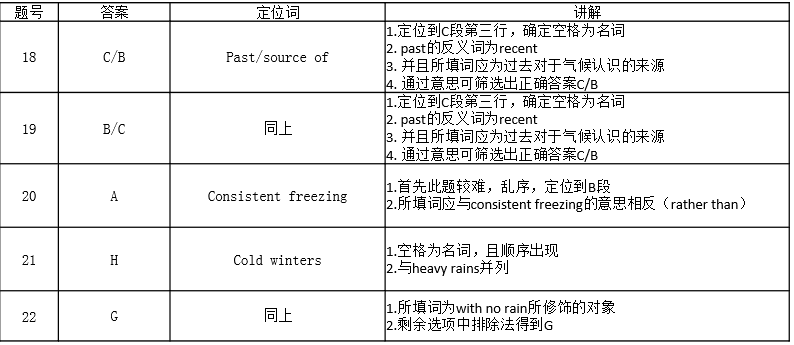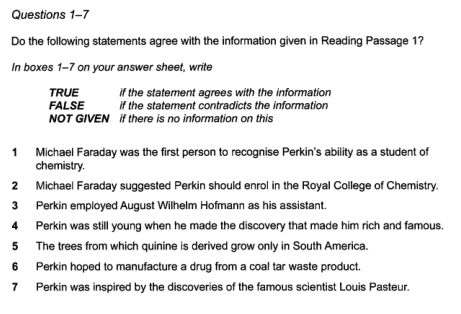托福阅读冲刺满分必备技巧介绍
托福阅读高分是很多同学梦寐以求的考试结果,而阅读部分考生也的确有相对更高的可能性拿到好成绩,今天小编给大家带来了托福阅读冲刺满分必备技巧介绍,希望能够帮助到大家,一起来学习吧。
托福阅读冲刺满分必备技巧介绍
托福阅读挑战30满分技巧:分段做题省去扫读时间
在四六级考试中,阅读时间也很少,虽然单词相对简单,但是篇幅较长,逐字阅读肯定是没有时间的,所以做题技巧中扫读是很重要的环节,目的是找到与题目相关的段落或者语句才能找到做题依据。而在托福阅读考试中,是每阅读完一段就做只涉及该段的题目,信息集中,重要的是节省了大量的时间,缓解了托福阅读文章通篇的眩晕感。而这部分题目就是四六级中常说的细节题。
托福阅读挑战30满分技巧:分段阅读打好基础
在分段阅读的同时,可以记下关键词或者中心句,在文章结束时就可以有根据回想起整篇文章的脉络结构,逻辑关系,对最后一题的选择有很大帮助。同时题目中也明确给了做题方法,即没有提到的信息或者不重要的观点就可以排除了。
托福阅读挑战30满分技巧:生词不必怕
托福阅读考试中对单词量的要求还是很大的,即使单词量很大了,也难免会遇上生僻词的情况,而托福考试中选用的文章说明性特别强,往往是自定义 — 自解释的模式,遇到生词,即使不知道什么意思,也可以根据上下文语境弄清它们之间的关系,运用逻辑推理的方法作出正确的答案。其次,还可以分析选项,进行对比,往往会发现选项中通常会出现两个意思相反的选项,此时再仔细重读原文就可以排除错误选项了。
托福阅读挑战30满分技巧:近义词选择有技巧
几乎每段中都会有生词意思辨析题,有些词考生一看就认识,这样的题目就很容易了,但是也不能粗心大意,如果时间富裕或者把握不大,可以把选项带入文章中检查一遍。对于那些不认识的词汇,也是有许多技巧的。首先是分析词性,采用排除法排除词性不一致的选项。其次是用代入法。选项中给出的词意一般就是考生认识的,将选项带入,分析一下是否能够保证原文合情合理,通顺。
托福阅读练习之冰箱的发展
By the mid-nineteenth century, the term "icebox" had entered the American language, but ice was still only beginning to affect the diet of ordinary citizens in the United States. The ice trade grew with the growth of cities. Ice was used in hotels, taverns, and hospitals, and by some forward-looking city dealers in fresh meat, fresh fish, and butter. After the Civil War (1861-1865), as ice was used to refrigerate freight cars, it also came into household use. Even before 1880, half the ice sold in New York, Philadelphia, and Baltimore, and one-third of that sold in Boston and Chicago, went to families for their own use. This had become possible because a new household convenience, the icebox, a precursor of the modern refrigerator, had been invented.
Making an efficient icebox was not as easy as we might now suppose. In the early nineteenth century, the knowledge of the physics of heat, which was essential to a science of refrigeration, was rudimentary. The commonsense notion that the best icebox was one that prevented the ice from melting was of course mistaken, for it was the melting of the ice that performed the cooling. Nevertheless, early efforts to economize ice included wrapping the ice in blankets, which kept the ice from doing its job. Not until near the end of the nineteenth century did inventors achieve the delicate balance of insulation and circulation needed for an efficient icebox.
But as early as 1803, an ingenious Maryland farmer, Thomas Moore, had been on the right track. He owned a farm about twenty miles outside the city of Washington, for which the village of Georgetown was the market center. When he used an icebox of his own design to transport his butter to market, he found that customers would pass up the rapidly melting stuff in the tubs of his competitors to pay a premium price for his butter, still fresh and hard in neat, one-pound bricks. One advantage of his icebox, Moore explained, was that farmers would no longer have to travel to market at night in order to keep their produce cool.
1. What does the passage mainly discuss?
(A) The influence of ice on the diet
(B) The development of refrigeration
(C) The transportation of goods to market
(D) Sources of ice in the nineteenth century
2. According to the passage , when did the word "icebox" become part of the language of the United States?
(A) in 1803
(B) sometime before 1850
(C) during the civil war
(D) near the end of the nineteenth century
3. The phrase "forward-looking" in line 4 is closest in meaning to
(A) progressive
(B) popular
(C) thrifty
(D) well-established
4. The author mentions fish in line 4 because
(A) many fish dealers also sold ice
(B) fish was shipped in refrigerated freight cars
(C) fish dealers were among the early commercial users of ice
(D) fish was not part of the ordinary person's diet before the invention of the icebox
5. The word "it" in line 5 refers to
(A) fresh meat
(B) the Civil War
(C) ice
(D) a refrigerator
6. According to the passage , which of the following was an obstacle to the development of the icebox?
(A) Competition among the owners of refrigerated freight cars
(B) The lack of a network for the distribution of ice
(C) The use of insufficient insulation
(D) Inadequate understanding of physics
7. The word "rudimentary" in line 12 is closest in meaning to
(A) growing
(B) undeveloped
(C) necessary
(D) uninteresting
8. According to the information in the second paragraph, an ideal icebox would
(A) completely prevent ice from melting
(B) stop air from circulating
(C) allow ice to melt slowly
(D) use blankets to conserve ice
9. The author describes Thomas Moore as having been "on the right track" (lines 18-19) to indicate that
(A) the road to the market passed close to Moore's farm
(B) Moore was an honest merchant
(C) Moore was a prosperous farmer
(D) Moore's design was fairly successful
10. According to the passage , Moore's icebox allowed him to
(A) charge more for his butter
(B) travel to market at night
(C) manufacture butter more quickly
(D) produce ice all year round
11. The "produce" mentioned in line 25 could include
(A) iceboxes
(B) butter
(C) ice
(D) markets
托福阅读:词汇之古代文明
the Nile civilization 尼罗河文明;
the Minoan civilization米诺安/克里特文明;
Atlantis(沉入海底的)亚特兰蒂斯;
the Mayan civilization玛雅文明;
Sodom and Gomorrah古城索多玛和蛾摩拉;
Pompeii庞贝古城;
the Colosseum罗马斗兽场;
pyramid金字塔;
Sphinx狮身人面像
托福阅读相关文章:
★ 英语阅读
★ 学习资料库
★ 学习资料库
★ 大学英语学习计划书
★ 托福听力备考阶段高效提升必做4件事
★ 托福听力7大类关键信号词全面讲解
★ 托福改革后首考落幕 新增“托福移动考点”
★ 托福阅读备考5个步骤分享
★ 托福阅读句子插入题解题本质原则讲解
★ 短期内提升托福听说读写的方法
上一篇:托福阅读考试基本做题顺序介绍
下一篇:托福阅读细节题找对原文信息点技巧




